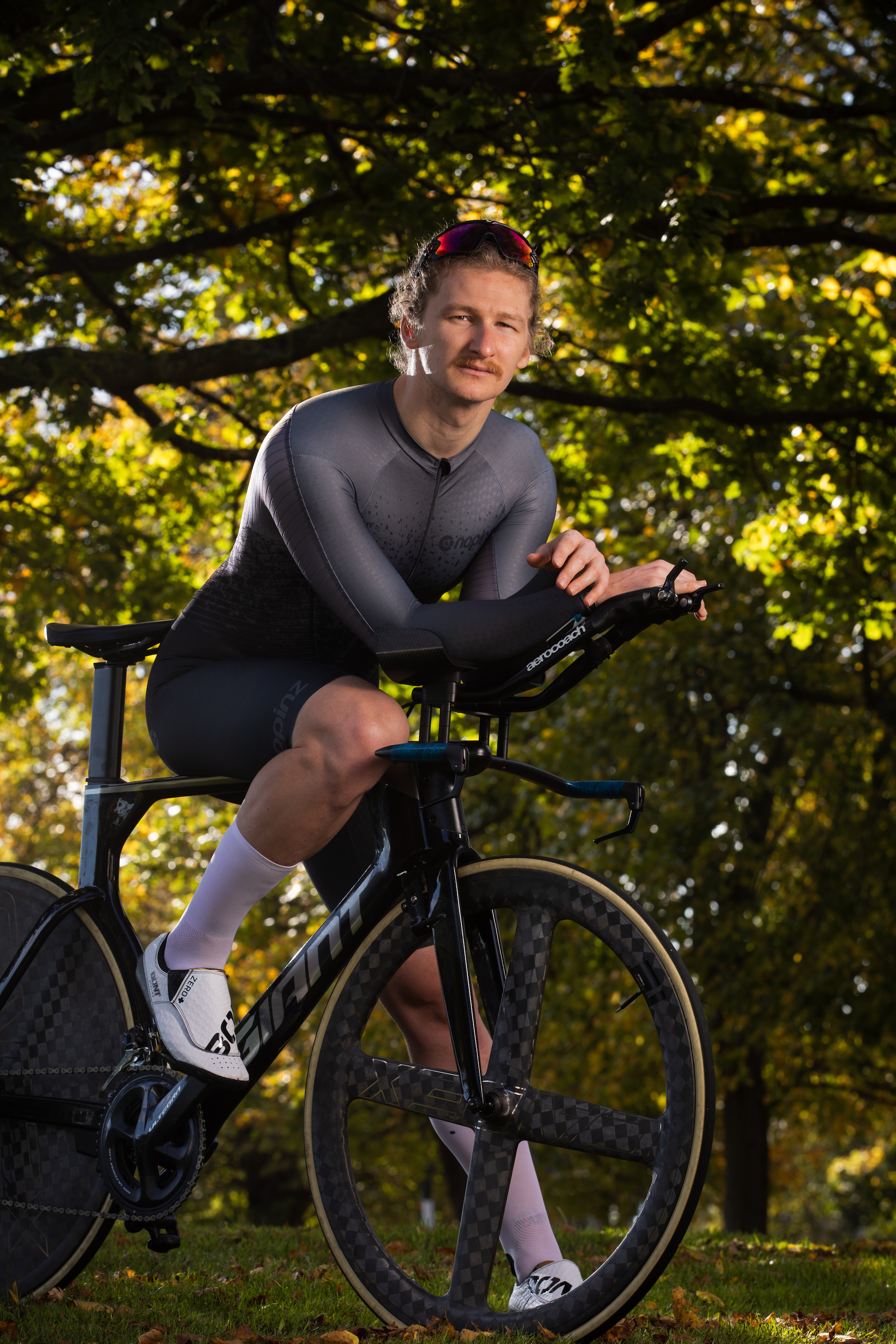Scott Foil Premium review
£8,000 of uncompromising and stylish speed

The Scott Foil is a dream race bike that will make you excited to get out on a ride. It’s not the most comfortable, and I found the integration came at the cost of practicality, but if you’re looking for free speed and don’t mind making these sacrifices then this could be the one for you.
-
+
Truly rapid
-
+
Stunning to look at
-
+
Almost perfect out of the box
-
-
Power meter was sorely missed
-
-
Quite impractical
You can trust Cycling Weekly.

If you like to ride fast, then Scott's aero bike - the Foil - should certainly be near the top of your dream ride list.
Each time Cycling Weekly has tested an updated model we’ve been blown away by the speed. The bike won an Editor's Choice award in 2018 and this iteration of the disc Scott Foil Premium does nothing to break the award winning mould.
But how does this Foil stack up on the road compared with the rivals - the likes of the Specialized Venge, Trek Madone and the Cannondale SystemSix?
The Scott Foil frameset remains a striking aero design, with its chunky tubing around the bottom bracket and headset, fin-like details on the seat-tube and the fork, and of course the ever fashionable dropped seatstays which feature across nearly all of the current crop of top end race bikes (save Giant's newest TCR).
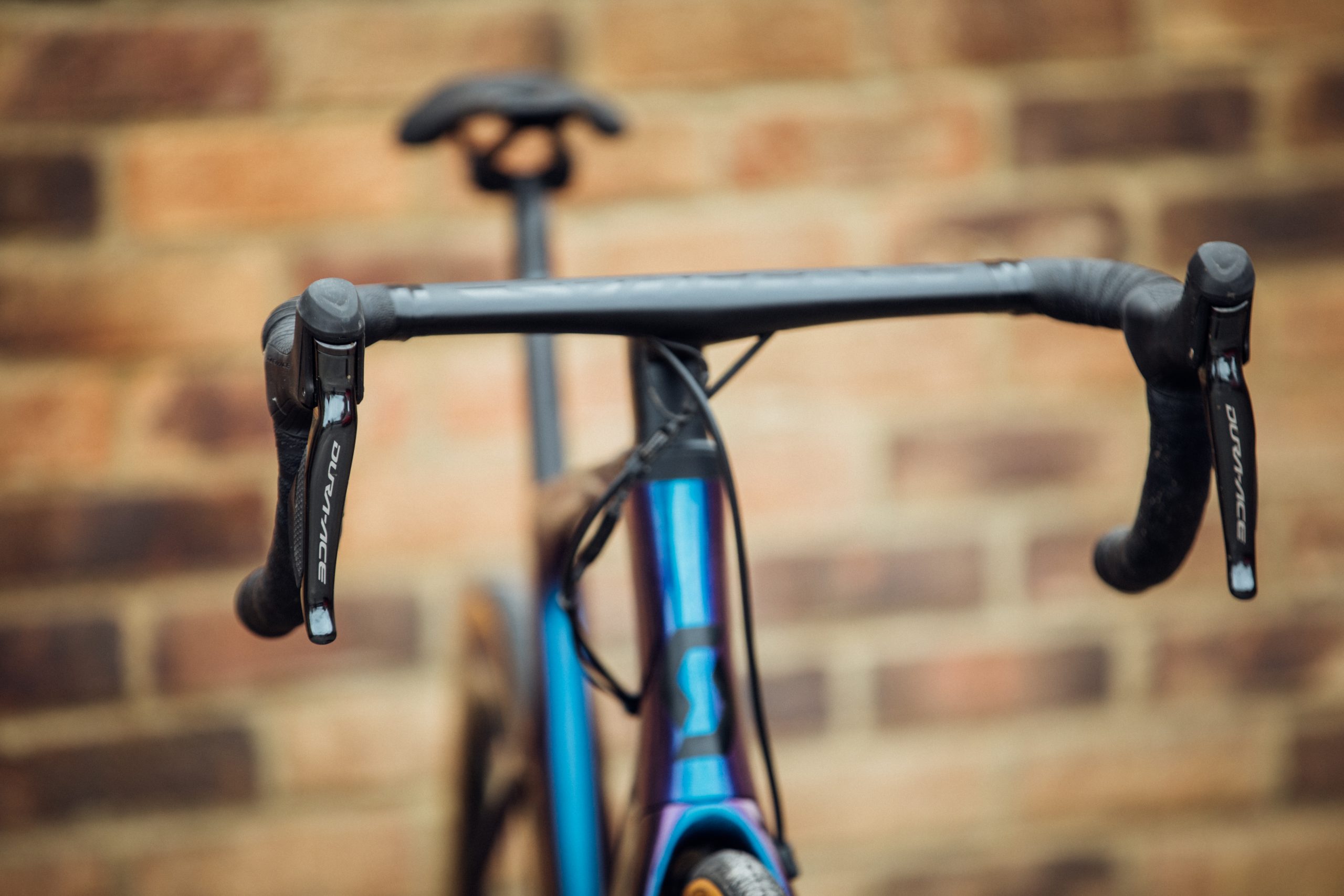
Scott have held onto the handy integration, with the aero fork, aero stem and spacers, and all cables hidden almost entirely from view within the frameset – even the Shimano Di2 electronic shifting setup is tucked away in the downtube next to the bottom bracket.
The latest race content, interviews, features, reviews and expert buying guides, direct to your inbox!
There is a fairly sizeable drawback from all this integration however, in that the Foil is an extremely fiddly and sometimes impractical bike to actually live with.
I found adjusting the stack on the aero stem an extremely fiddly operation, it’s not as simple as just planting the spacers on top of the stem as it would be with many non-aero setups. There are aero set-ups which make adjustments easy, such as the system used on the Canyon Aeroad and Canyon Ultimate.
The internal Di2 system presented more of an issue. I disconnected the cable when removing the seat post, and reconnecting it was quite a palaver as I had to remove the bottom bracket to attach it to the junction box. This difficulty isn’t exclusive to the Foil, however, there are other frames where Cycling Weekly’s tech team has discovered similar issues – but it’s worth bearing in mind.
This inconvenience, however, is arguably the price you pay for seamless integration.
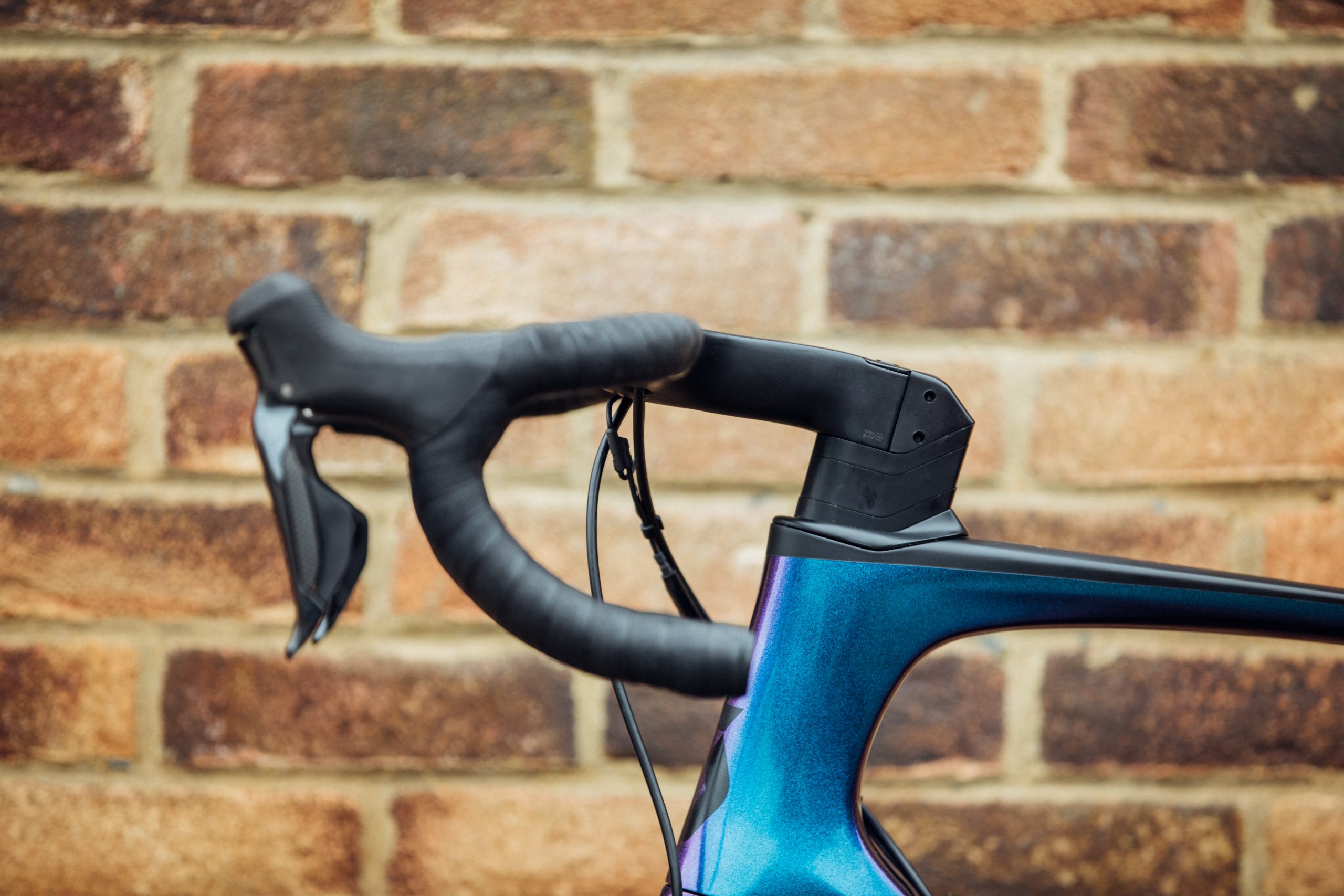
The Foil comes with the aero-optimised tubeless Syncros Capital 1.0 50 disc wheels, which retail at around £1,100. This certainly isn't a case of stock wheels you're expected to upgrade, Scott is ensuring riders get a decent wheelset worthy of the rapid framset and I can't see there would be any need to swap these out unless you already owned a preferred set.
Running Schalbe PRO ONE Microskin, TL-Easy Fold tyres at 28mm add a welcome complement. I found the width of these lent plenty of confidence when cornering, though can appreciate that many road racers might rather stick with the more traditional 25mm rubber.
The frame and wheels together definitely upped my pace - I found myself easily setting time PBs on just about every Strava segment whenever I turned on the gas, finding myself comfortably sitting at 32mph on a long straight stretch of road without feeling the pinch.
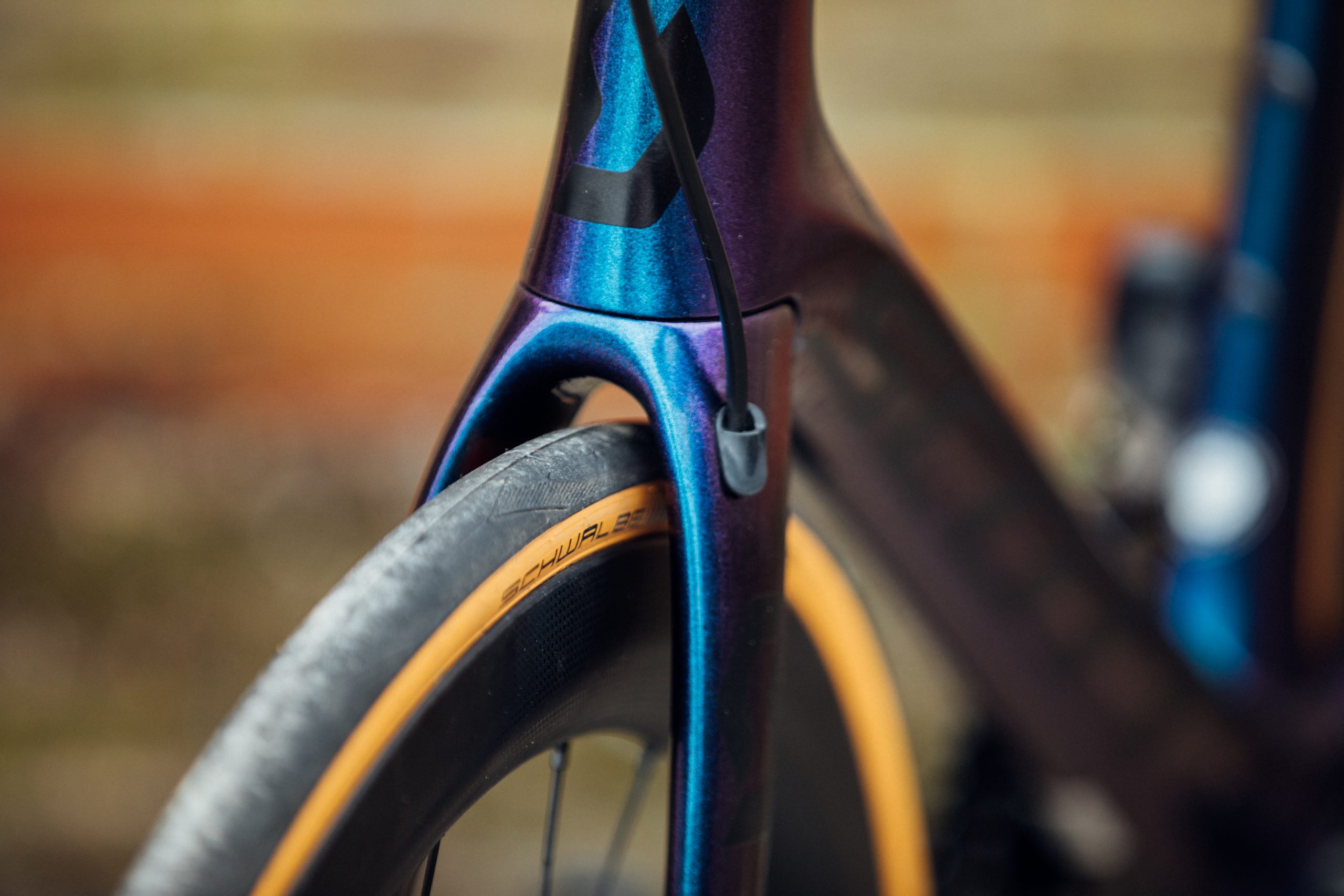
Even on the climbs this thing is fast as I was able to knock minutes, rather than seconds, off my time on the local Layham’s Road climb in Surrey with its respectable if not world-beating 7.48kg weight. I cut a rather substantial two minutes off my previous best 5km time riding this bike, too.
There is the obvious comfort trade-off when riding a bike this fast and you really can feel every imperfection in the road on the Foil – it’s never going to be a comfortable all-day bike for those who want to relax into their ride.
The set-up in testing was slightly compromised by the overly high stem stack, which made the bike feel slightly cumbersome. Unfortunately, thanks to the aero spacer system, without cutting the steerer or ordering an alternative stem cap, I wasn’t able to slam the stem in the way I would like to get the real race feel.
But, as any self-respecting bike fitter would tell you, if you’re going to spend £8,000 on a bike it’s worth getting the fit right, so you might be tempted to spend the extra and make sure the steerer tube is cut to your perfect specifications by an expert. Scott does also offer an alternative cap you can run with spacers above the stem.
The Foil is a little higher than some competitors - a size 56cm comes in with a stack of 568.3mm vs 555mm on the Venge and 560mm on the SystemSix - though it is important to remember that handlebar style among other factors will have an effect so the numbers aren't entirely comparable, but give you a good idea.
>>> Road bike geometry explained
The spec is decent for the price, as the Foil runs the highest-end Shimano Dura-Ace Di2 groupset, which comes with all the benefits of an expensive and world-class shifting experience, but there is one major omission from the spec list on this bike – a power meter.
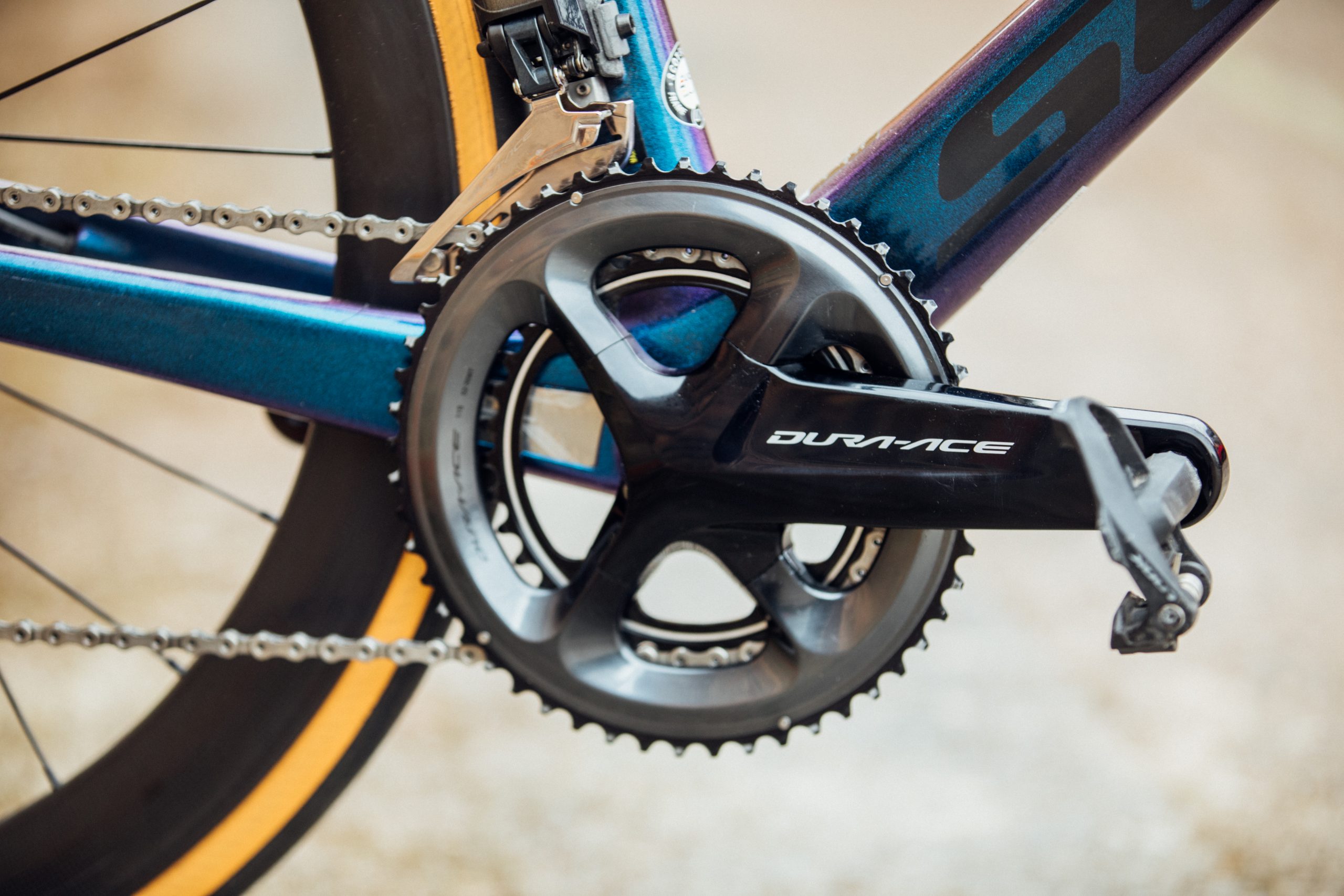
While the Foil doesn’t hit the price level of say the Trek Madone SLR Disc (£11,000), at £8,099 the Foil is still sits on a high shelf in terms of cost.
With that in mind, many riders would expect a true complete set-up, ready to do everything you could ask of it out of the box, and though it's an emerging trend, a power meter is becoming part of that expectation. As an example, Giant's 2021 TCR comes with a Quarq power meter at £6799.
Sadly I had to switch out the off-side Dura-Ace crankarm for my Ultegra power meter version while training with this bike, which is an unwelcome hassle and drop in spec for a still-expensive bike.
Despite these relatively minor caveats, the Foil is an utter dream race bike.
It’s fast, stiff, climbs with grace and just looks so stylish, with its metallic finish purple blue paint-job, you catch a lot of eyes on the road.
But this is a bike for the racer.
While a few of those details like power meter and fiddly internal systems that might dissuade the more casual rider, anyone looking for a pure-speed addition to the catalogue of bikes need look no further than this.
Despite its impracticalities, this bike is nearly everything you could ask for and is a true joy to ride – I was extremely excited every time I jumped on to go for a spin.
Alex Ballinger is editor of BikeBiz magazine, the leading publication for the UK cycle industry, and is the former digital news editor for CyclingWeekly.com. After gaining experience in local newsrooms, national newspapers and in digital journalism, Alex found his calling in cycling, first as a reporter, then as news editor responsible for Cycling Weekly's online news output, and now as the editor of BikeBiz. Since pro cycling first captured his heart during the 2010 Tour de France (specifically the Contador-Schleck battle) Alex covered three Tours de France, multiple editions of the Tour of Britain, and the World Championships, while both writing and video presenting for Cycling Weekly. He also specialises in fitness writing, often throwing himself into the deep end to help readers improve their own power numbers. Away from the desk, Alex can be found racing time trials, riding BMX and mountain bikes, or exploring off-road on his gravel bike. He’s also an avid gamer, and can usually be found buried in an eclectic selection of books.
